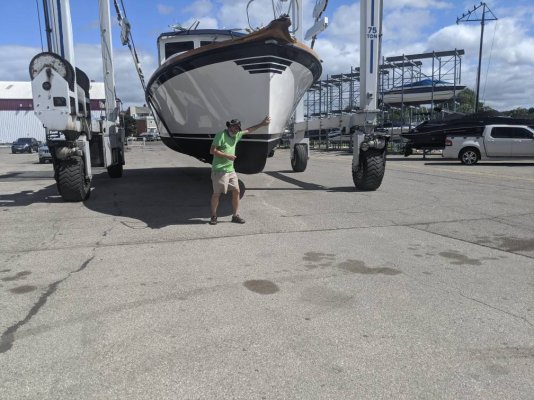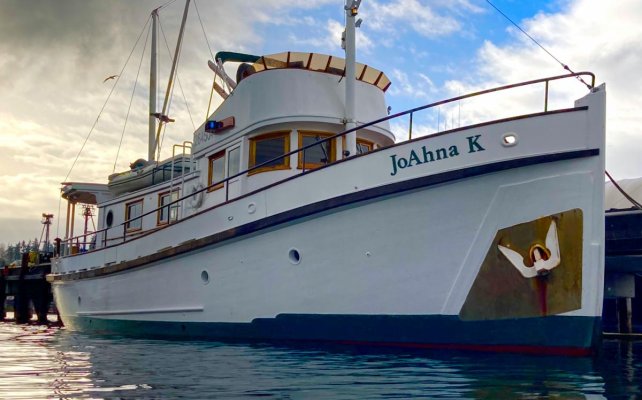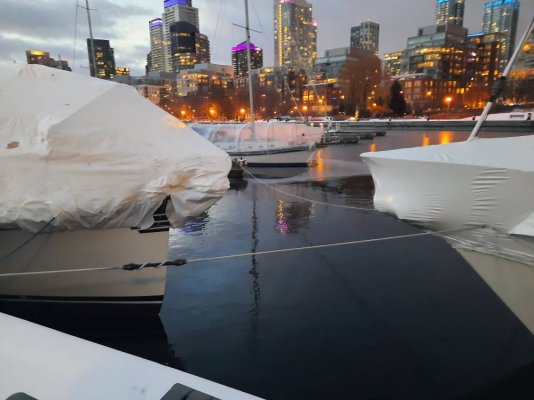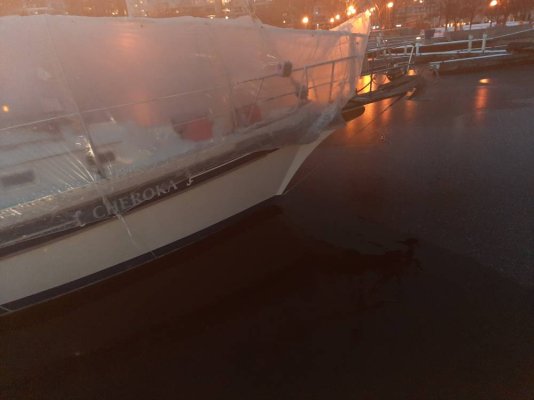Jeff F
Guru
- Joined
- Nov 5, 2015
- Messages
- 2,559
- Location
- Canada
- Vessel Name
- Escapade
- Vessel Make
- 50` US Navy Utility trawler conversion
I'm about to order an eye to install on my bow about where my hand is in this picture.
My intent is to have a permanent nylon tether attached to the eye, long enough to reach the pulpit, with a chain hook. At anchor the tether would take the load with slack on the windlass.
Does this sound like a good plan? I'm sure its been discussed here but gave up searching.
My intent is to have a permanent nylon tether attached to the eye, long enough to reach the pulpit, with a chain hook. At anchor the tether would take the load with slack on the windlass.
Does this sound like a good plan? I'm sure its been discussed here but gave up searching.




